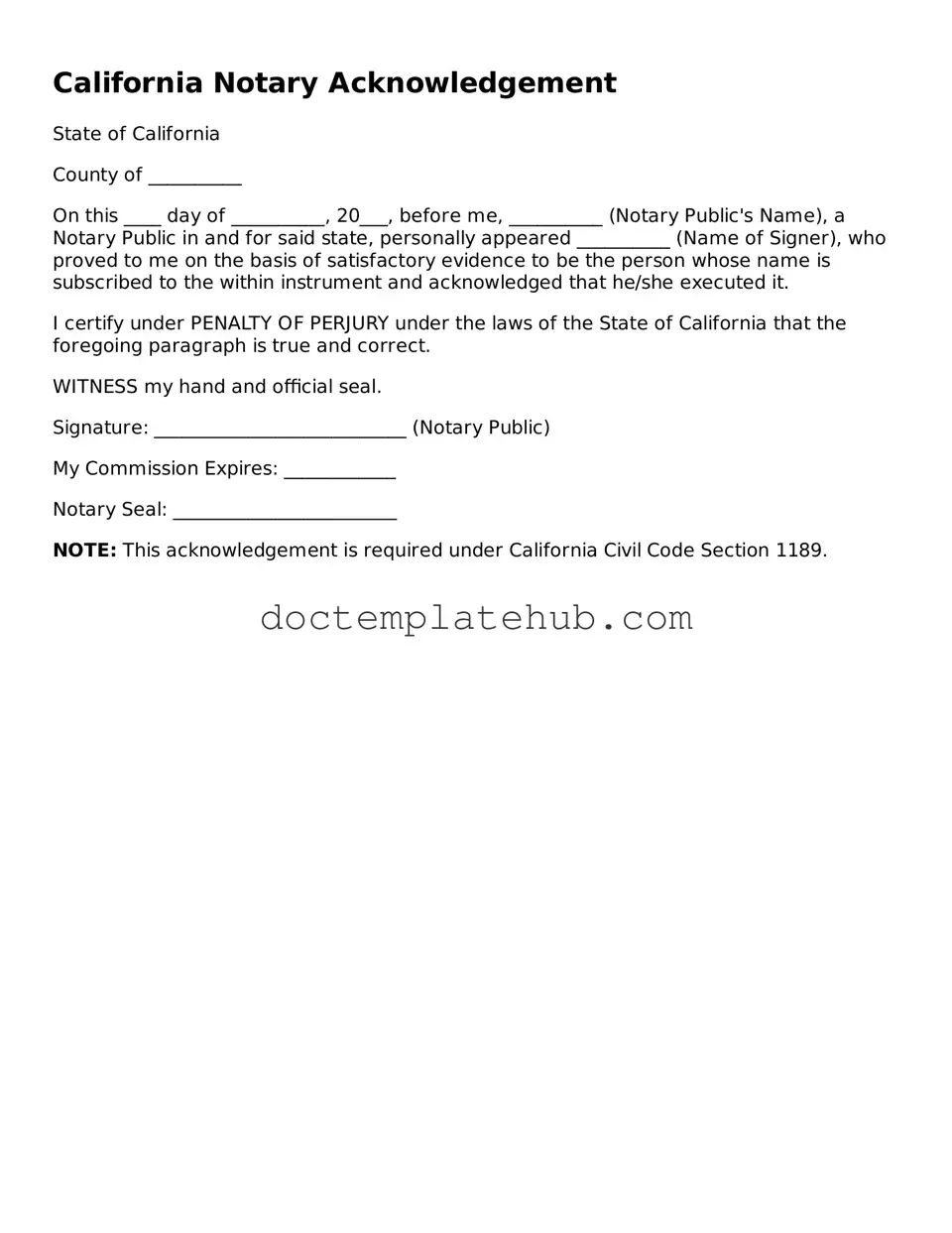What is a California Notary Acknowledgement form?
The California Notary Acknowledgement form is a legal document used to verify the identity of individuals signing a document. This form serves as proof that the signer appeared before the notary public and acknowledged that they signed the document willingly and for the purposes stated within it. It is commonly used in various transactions, such as real estate deals, legal agreements, and other official documents requiring notarization.
When is a Notary Acknowledgement required?
A Notary Acknowledgement is often required for documents that will be recorded with a government agency or used in legal proceedings. Examples include deeds, mortgages, and powers of attorney. While not every document needs notarization, using a Notary Acknowledgement can provide an added layer of authenticity and security, ensuring that the signatures are legitimate and that the parties involved are who they claim to be.
How do I complete a Notary Acknowledgement form?
To complete a Notary Acknowledgement form, the signer must appear before the notary public. The notary will ask for identification to verify the signer's identity. After confirming the identity, the notary will fill out the form, including details such as the date, the signer's name, and the type of document being acknowledged. The signer then signs the document in the presence of the notary, who will also sign and seal the form to finalize the acknowledgment.
What identification is needed for notarization?
For notarization, a signer must provide valid identification. Acceptable forms of ID typically include a state-issued driver's license, a passport, or a government-issued identification card. The ID must contain a photograph and a signature. If the signer does not have these forms of identification, the notary may accept other forms of ID, but it is best to check in advance with the notary regarding their specific requirements.
Can a Notary Acknowledgement be performed remotely?
As of recent legislation, remote notarization is allowed in California under specific conditions. This process typically involves the use of audio-visual technology to facilitate the notarization. However, both the notary and the signer must comply with state regulations regarding remote notarization. It is important to confirm that the notary is authorized to perform remote acknowledgments and to understand any additional requirements that may apply.
